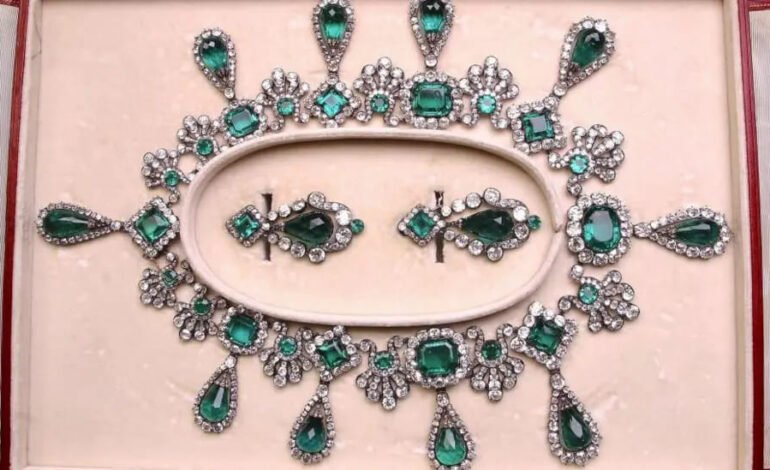Louvre jewel heist raises fears over cultural heritage theft in Europe

A daring jewel heist at the Louvre Museum has reignited concerns over cultural heritage theft across Europe. In a raid that lasted only minutes, a gang of masked thieves made off with priceless 19th-century jewels, exposing once again the vulnerability of the continent’s most famous museums to fast, highly coordinated attacks.
The robbers are believed to have used a vehicle-mounted mechanical ladder to gain entry through a first-floor window before smashing display cases inside the museum’s Gallery of Apollo. They escaped on mopeds before police could intervene. Among the stolen pieces were diamond-encrusted jewels once belonging to France’s royal family, including emerald earrings and a brooch tied to Empress Eugénie, the wife of Napoleon III. A diamond and emerald crown from the same collection was dropped near the scene during their escape.
“These are not simply luxury items. They are cultural artefacts that tell the story of a country,” said an official involved in the investigation. “Recovering them is about protecting heritage, not just property.”
International News | Related Reading
Explore key global stories and keep reading across EyeOnLondon.
Trump accuses Colombian president of illegal drug links
A sharp escalation in rhetoric with implications for US–Colombia relations, security cooperation and the 2025 campaign trail.
Read the articleMore International
Bear attacks reach record high in Japan
Rising encounters linked to habitat pressures and food scarcity are prompting new safety measures in rural and urban fringes.
Read the articleMore International
Coca-Cola India files for $1bn IPO
A major listing signals growth ambitions in one of the world’s fastest-expanding consumer markets and a test for investor appetite.
Read the articleMore International
A pattern of precision raids
The speed and precision of the Louvre heist follows a troubling pattern. Museums across Europe have seen a rise in highly organised burglaries targeting royal jewels, cultural treasures, and high-value gemstones. Unlike artworks, jewels can be broken down, re-cut or melted, making them difficult to trace once removed from their original settings. Security experts have warned that these criminal networks operate across borders and often plan operations months in advance.
Recent thefts have targeted royal collections in Germany and Scandinavia. Authorities across the EU have intensified cooperation to track the movement of stolen artefacts, but only a fraction of such items are ever recovered.
Heritage crime is increasingly viewed as both a cultural and financial threat, with black market buyers able to disperse stolen gems globally within days.
Cultural security under strain
The theft has also thrown a spotlight on museum security, especially in sites that receive millions of visitors each year. As cultural institutions reopen fully after the pandemic, their security strategies are under pressure. Many have added layers of digital surveillance and reinforced physical defences, but the speed of recent raids suggests criminal groups are adapting just as quickly.
Experts say the combination of high visitor numbers and historic buildings makes some museums more difficult to protect. A brief gap in patrol patterns or a single unguarded access point can give thieves just enough time to strike.
In France, heritage protection agencies are expected to review security protocols for museums holding royal or imperial collections. Investigators are also looking into whether the Louvre raid involved inside information.
Across Europe, agencies have stepped up joint work on cultural heritage crime, including shared databases, recovery campaigns and training to help identify dismantled items.
Priceless loss
The cultural value of the stolen jewels far outweighs their market price. Many pieces are unique, handcrafted works from France’s Second Empire period and are considered irreplaceable. Even if the gems are recovered, their historical integrity may be lost if they have been dismantled or altered.
“When an artefact like this vanishes, it’s not just a theft. It’s a wound to our shared history,” said a historian specialising in French decorative arts.
Across Europe, heritage crime is now treated as a growing security priority. International cooperation has intensified in recent years, particularly as criminal networks exploit gaps in legislation and enforcement.
For more independent coverage of crime and justice stories, follow EyeOnLondon. We’d love to hear your views in the comments.
[Image Credit | © Musée du Louvre.]
Follow us on:
Subscribe to our YouTube channel for the latest videos and updates!
We value your thoughts! Share your feedback and help us make EyeOnLondon even better!








